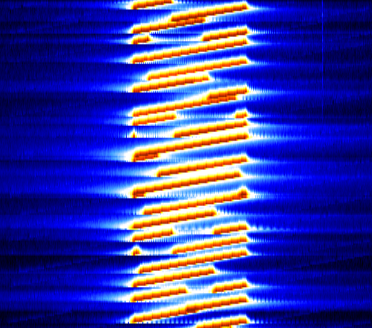Many of us have certainly tried to understand or explain what LoRa modulation is and how LoRaWAN nodes communicate with gateways. Would it be much easier if we could see it? It is not as difficult or expensive as it might seem.
A popular DVB-T USB dongle usually based on Realtek RTL2832U chipset is all that is needed. Together with the appropriate application such as CubicSDR, it becomes a very cheap wide-band SDR (Software Defined Radio) receiver, which can be successfully used to explore LoRaWAN frequency bands.

Just connect the dongle, run installed application, choose the appropriate signal source and frequency range. Radio signals sent by devices operating nearby should be visible on the spectrogram (waterfall). It may require some practice to achieve desired results. Of course the best results will be for highest spreading factors when the chirps are stretched over time. Waterfall speed can also be adjusted in most of the applications.

This spectrogram allows us to easily understand or explain most of the terms related to LoRa modulation such as chirps, bandwidth or spreading factors. In addition to the structure of LoRa physical layer packets transporting LoRaWAN frames, we can observe the Join procedure or occupancy of frequency channels according to the appropriate frequency plan. All this can be done during workshops or presentations — it will surely make them more interesting. Explore and explain but remember to be responsible.
